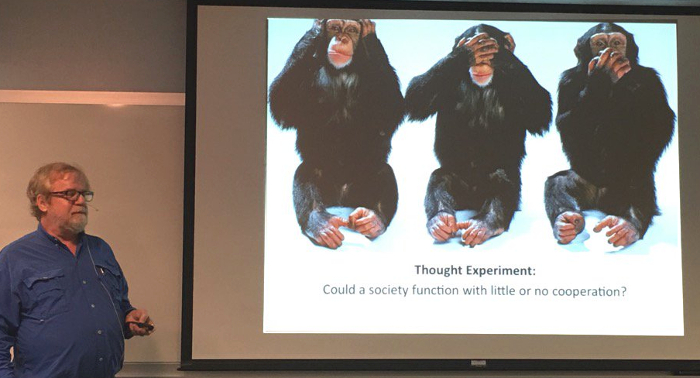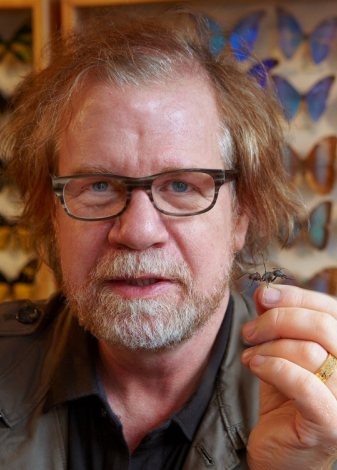NIMBioS Seminar Series
In conjunction with the interdisciplinary activities of the National Institute for Mathematical and Biological Synthesis (NIMBioS), a seminar series on topics in mathematical biology will be hosted at NIMBioS every other Tuesday at 3:30 p.m. (unless otherwise noted) in the Hallam Auditorium, Room 206, Claxton Building, 1122 Volunteer Blvd. Seminar speakers will focus on their research initiatives at the interface of mathematics and many areas of the life sciences. Light refreshments will be served in Room 205 beginning 30 minutes before each talk. Faculty and students from across the UT community are welcome to join us.
Speaker:
Dr. Mark W. Moffett, National Museum of Natural History
Time/Date: Tuesday, October 11, 2016, 3:30–5:00 p.m.*
Location:
Room 206, Claxton Building, 1122 Volunteer Blvd.
Topic:
How a shift in social identity made enormous societies possible: An overlooked turning point in human evolution
Abstract:
Human societies are examined as distinct and coherent groups. In the societies of most other vertebrates, each member must recognize every other member as an individual. This typically limits societies to 100 members, and never more than 200. Numerous and diverse identity labels substitute for such knowledge in humans, and were necessary before our societies could grow more populous. How did a capacity for using societal labels arise? The rule of parsimony indicates that, at least as far back as their divergence from the chimpanzee line, our ancestors would have never lived in strict family groups or in any other compact societies offering regular face-to-face interaction. Nor did they form open networks. They were fission-fusion species that evolved, by simple steps, from having societies bounded by the recognition of individuals to societies differentiated by labels. I propose that this transition, ignored before now, occurred well before language by a simple shift in signals resembling those employed by chimpanzees. Free from usual size limits, societies at first reached into the multiple hundreds. Agriculture would permit societies to grow larger still, in part through the improved stabilization of labels within settled communities. This lecture expands upon the author's review in the September 2013 issue of Human Nature: Human Identity and the Evolution of Societies.
Mark W. Moffett is an entomologist, nature photographer and explorer. He received his PhD at Harvard University, studying marauder ants with renowned insect scientist Edward O. Wilson and is currently a research associate in entomology at the Smithsonian Institution's National Museum of Natural History. He has written more than 25 articles for National Geographic Magazine, which has featured nearly 500 of his images. He is also the author of several books, most recently Adventures Among Ants: A Global Safari with a Cast of Trillions. Moffett has appeared several times on The Colbert Report and Late Night with Conan O'Brien. He can be found at http://www.doctorbugs.com
*Join us for refreshments at 3 p.m.
Seminar Flyer (pdf)
![]() Watch seminar online. This video was streamed live. Live-streamed seminars are archived for later viewing on NIMBioS' YouTube channel.
Watch seminar online. This video was streamed live. Live-streamed seminars are archived for later viewing on NIMBioS' YouTube channel.
For more information about this and other NIMBioS Seminars, visit /seminars.

NIMBioS
1122 Volunteer Blvd., Suite 106
University of Tennessee
Knoxville,
TN 37996-3410
PH: (865) 974-9334
FAX: (865) 974-9461
Contact NIMBioS



